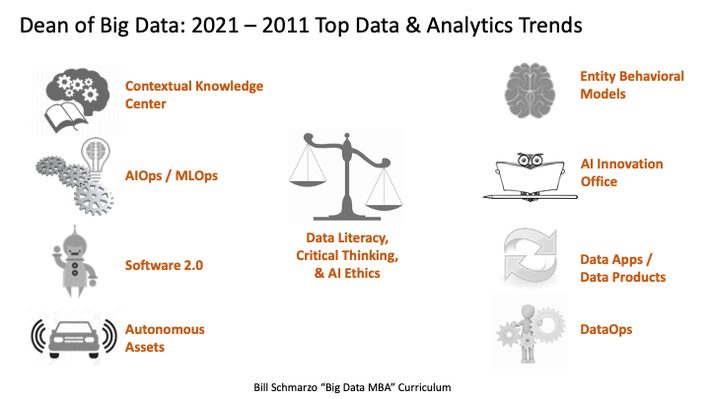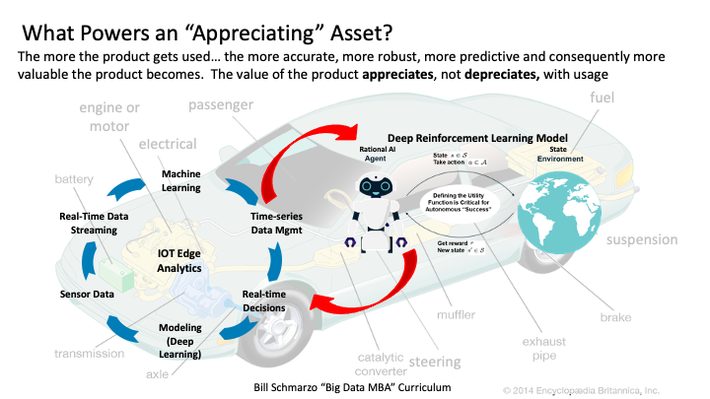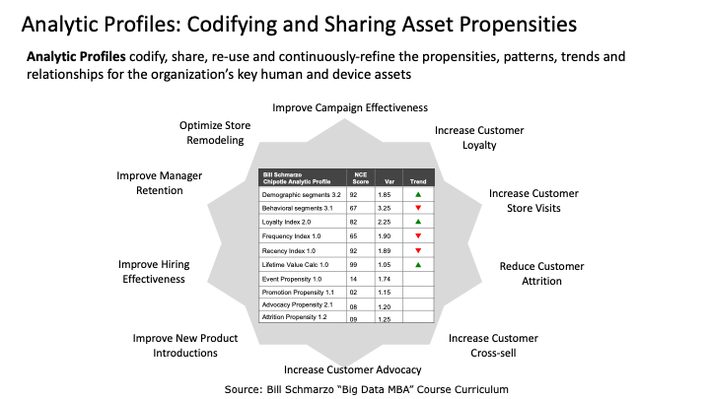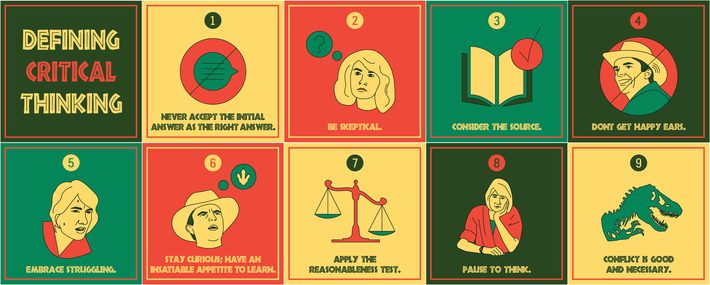
I’m starting to see the big consultancies and advisory services coming out with their lists of “what’s hot” from a data and analytics perspective. While I may not have the wide purview of these organizations, I certainly do work with some interesting organizations who are at various points in their data and analytics journey.
With that in mind, I’d like to share my perspective as to what I think will be big in the area of data and analytics over the next 18 months.
- Contextual Knowledge Center. A contextual directory, on AI steroids, that facilitates the identification, location, reuse, and refinement (including version control) of the organization’s data and analytic assets (such as workflows, data pipelines, data transformation and enrichment algorithms, critical data elements, composite metrics, propensity scores, entity or asset models, ML models, standard operating procedures, governance policies, reports, dashboard widgets, and design templates). It is an extension of an organization’s data catalog by integrating contextual search, Natural Language Processing (NLP), asset scoring, graph analytics, and a decisioning (recommendation) engine to recommendation data and analytic assets based upon the context of the user’s request.
- Autonomous Assets. These are composable, reusable, continuously-learning and adapting data and analytic assets (think intelligent data pipelines and ML models) that appreciate, not depreciate, in value the more that they are used. These autonomous assets produce pre-defined business and operational outcomes and are constantly being updated and refined based upon changes in the data and outcomes effectiveness, with minimal human intervention. This could apply to almost any digital asset including data pipelines, data transformation and enrichment algorithms, process workflows, AI / ML analytic models (like Tesla’s Fully Self Driving or FSD module), and standard operating procedures and policies. Yea, this is probably one of my top 3 topics.

- Entity Behavioral Models: These Analytic Profiles capture, codify, share, re-use, and continuously-refine the predicted propensities, patterns, trends and relationships for the organization’s key human and device (things) assets…at the level of the individual asset. This is the heart of nanoeconomics, which is the economics of individual human or device predicted behavioral and performance propensities. It is Entity Behavioral Models or Analytic Profiles that drive the optimization of the organization’s key business and operational use cases.

- AIOps / MLOps. This is an emerging IT field where organizations are utilizing big data and ML to continuously enhance IT operations (such as operational task automation, performance monitoring, load balancing, asset utilization optimization, predictive maintenance, and event detection, correlation, and resolution) with proactive and dynamic insights.
- DataOps. An automated, process-oriented methodology to improve model quality and effectiveness while reducing the cycle time in the training, testing and operationalizing data analytics. DataOps is an integrated suite of data management capabilities including best practices, automated workflows, data pipelines, data transformations and enrichments, and architectural design patterns.
- Data Apps / Data Products. Data apps or data products are a category of domain-centric, AI-powered apps designed to help non-technical users manage data-intensive operations to achieve specific business and operational outcomes. Data apps use AI to mine a diverse set of customer, product, and operational data, identify patterns, trends, and relationships buried in the data, make timely predictions and recommendations with respect to next best action, and track the effectiveness of those recommendations to continuously refine AI model effectiveness.
- Software 2.0. An emerging category of software that learns through advanced deep learning and neural networks versus being specifically programmed. Instead of programming the specific steps that you want the software program to execute to produce a desired output, Software 2.0 uses neural networks to analyze and learn how to produce that final output without defining the processing steps and with minimal human intervention. For example, Software 2.0 using neural networks can learn to differentiate a dog from a cat versus trying to program the characteristics and differences between a dog and a cat (good luck doing that!).
- AI Innovation Office. The AI Innovation Office is responsible for the testing and validation of new ML frameworks, career development of the organization’s data engineering and data science personnel, and “engineering” of ML models into composable, reusable, continuously refining digital assets that can be re-used to accelerate time-to-value and de-risk use case implementation. The AI Innovation Office supports a “Hub and Spoke” data science organizational structure where the centralized “hub” data scientists collaborate with the business unit “spoke” data scientists to engineer (think co-create) the data and analytic assets. The AI Innovation Office supports a data scientist rotation program where data scientists cycle between the hub and the spoke to provide new learning and development opportunities.
- Data Literacy, Critical Thinking, and AI Ethics. AI will impact every part of your organization not to mention nearly every part of society. Consequently, there is a need to train everyone on data literacy (understanding the realm of what’s possible with data), critical thinking (to overcome the natural human decision-making biases), and ethical AI (to ensure that the AI models are treating everyone equally and without gender, race, religious, or age biases). Everyone must be prepared to think critically about the application of AI across a range of business, environmental, and societal issues, and the potential ethical ramifications of AI model false positives and false negatives. Organizations must apply a humanistic lens from which to ensure that AI will be developed and used to the highest ethical standards.

Well, that’s it for this 2021. And if we can avoid another pandemic or some other major catastrophe, I’m sure that next year will be even more amazing!
